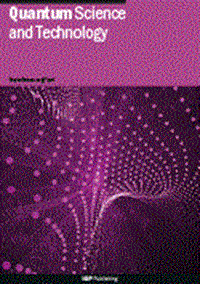量子传感器网络的选择性和抗噪声波估计
IF 5
2区 物理与天体物理
Q1 PHYSICS, MULTIDISCIPLINARY
引用次数: 0
摘要
我们考虑了在噪声存在下对平面波的选择性检测。我们提出了不同的方法来控制量子传感器网络的灵敏度,这使得人们可以从任意选择的波中解耦,同时保持对信号的灵敏度。将这些方法与经典的(无纠缠)传感器网络进行比较,我们发现了两个优点。首先,纠缠通过启用海森堡标度来提高精度。其次,通过利用无退相干的子空间,纠缠可以消除与不同传播方向的波对应的相关噪声过程。然后,我们提供了纠缠量子传感器网络提供的优势的理论和数值分析,它不是特定于波,可以引起普遍的兴趣。我们展示了在传感器位置数量与噪声源数量相当的情况下的指数优势。最后,我们概述了对其他波形的推广,例如球面谐波和一般时相关场。本文章由计算机程序翻译,如有差异,请以英文原文为准。
Selective and noise-resilient wave estimation with quantum sensor networks
We consider the selective sensing of planar waves in the presence of noise. We present different methods to control the sensitivity of a quantum sensor network, which allow one to decouple it from arbitrarily selected waves while retaining sensitivity to the signal. Comparing these methods with classical (non-entangled) sensor networks we demonstrate two advantages. First, entanglement increases precision by enabling the Heisenberg scaling. Second, entanglement enables the elimination of correlated noise processes corresponding to waves with different propagation directions, by exploiting decoherence-free subspaces. We then provide a theoretical and numerical analysis of the advantage offered by entangled quantum sensor networks, which is not specific to waves and can be of general interest. We demonstrate an exponential advantage in the regime where the number of sensor locations is comparable to the number of noise sources. Finally, we outline a generalization to other waveforms, e.g. spherical harmonics and general time-dependent fields.
求助全文
通过发布文献求助,成功后即可免费获取论文全文。
去求助
来源期刊

Quantum Science and Technology
Materials Science-Materials Science (miscellaneous)
CiteScore
11.20
自引率
3.00%
发文量
133
期刊介绍:
Driven by advances in technology and experimental capability, the last decade has seen the emergence of quantum technology: a new praxis for controlling the quantum world. It is now possible to engineer complex, multi-component systems that merge the once distinct fields of quantum optics and condensed matter physics.
Quantum Science and Technology is a new multidisciplinary, electronic-only journal, devoted to publishing research of the highest quality and impact covering theoretical and experimental advances in the fundamental science and application of all quantum-enabled technologies.
 求助内容:
求助内容: 应助结果提醒方式:
应助结果提醒方式:


